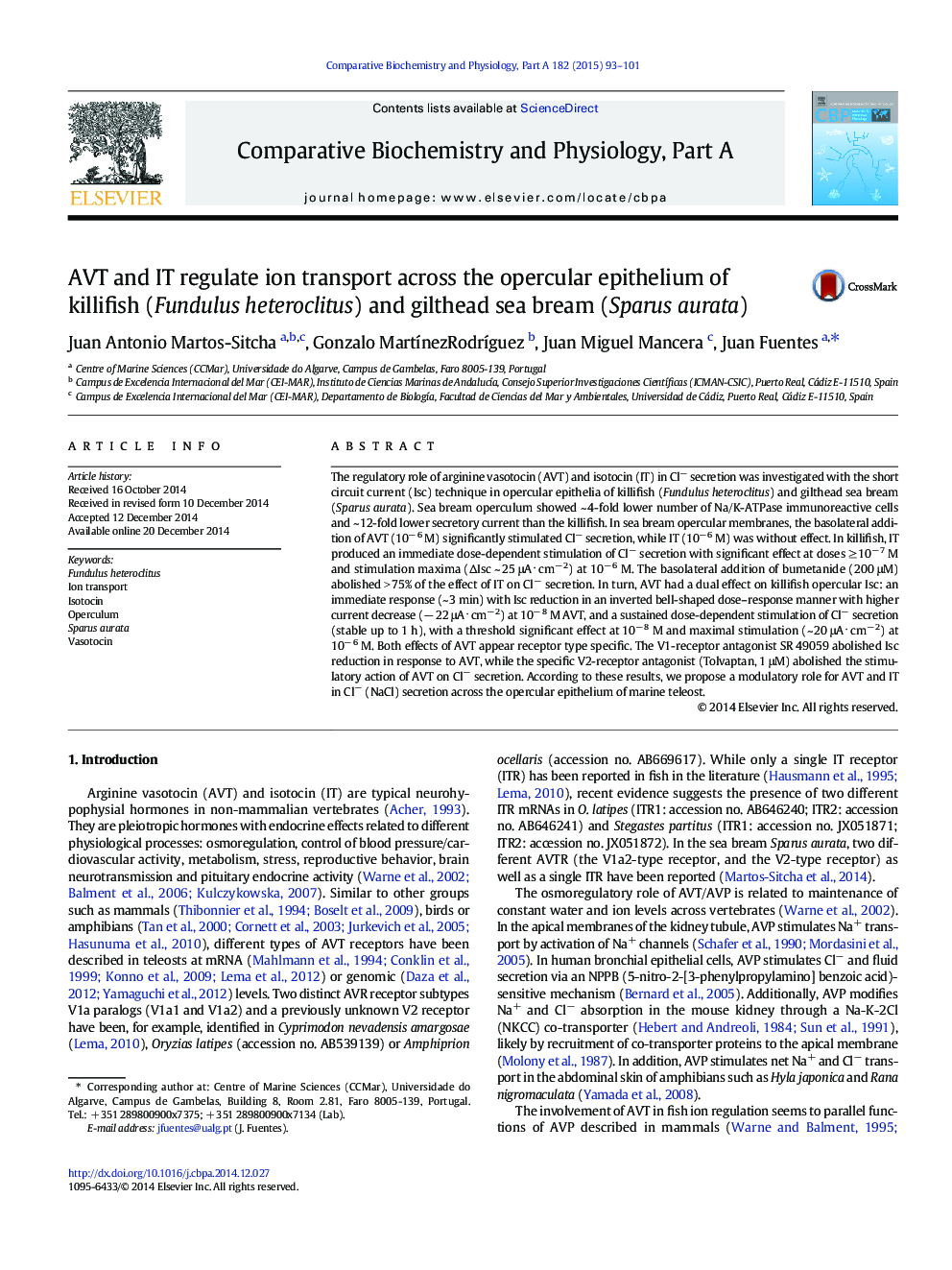| Article ID | Journal | Published Year | Pages | File Type |
|---|---|---|---|---|
| 1972088 | Comparative Biochemistry and Physiology Part A: Molecular & Integrative Physiology | 2015 | 9 Pages |
Abstract
The regulatory role of arginine vasotocin (AVT) and isotocin (IT) in Clâ secretion was investigated with the short circuit current (Isc) technique in opercular epithelia of killifish (Fundulus heteroclitus) and gilthead sea bream (Sparus aurata). Sea bream operculum showed ~ 4-fold lower number of Na/K-ATPase immunoreactive cells and ~ 12-fold lower secretory current than the killifish. In sea bream opercular membranes, the basolateral addition of AVT (10â 6 M) significantly stimulated Clâ secretion, while IT (10â 6 M) was without effect. In killifish, IT produced an immediate dose-dependent stimulation of Clâ secretion with significant effect at doses â¥Â 10â 7 M and stimulation maxima (âIsc ~ 25 μA â
 cmâ 2) at 10â 6 M. The basolateral addition of bumetanide (200 μM) abolished > 75% of the effect of IT on Clâ secretion. In turn, AVT had a dual effect on killifish opercular Isc: an immediate response (~ 3 min) with Isc reduction in an inverted bell-shaped dose-response manner with higher current decrease (â 22 μA â
 cmâ 2) at 10â 8 M AVT, and a sustained dose-dependent stimulation of Clâ secretion (stable up to 1 h), with a threshold significant effect at 10â 8 M and maximal stimulation (~ 20 μA â
 cmâ 2) at 10â 6 M. Both effects of AVT appear receptor type specific. The V1-receptor antagonist SR 49059 abolished Isc reduction in response to AVT, while the specific V2-receptor antagonist (Tolvaptan, 1 μM) abolished the stimulatory action of AVT on Clâ secretion. According to these results, we propose a modulatory role for AVT and IT in Clâ (NaCl) secretion across the opercular epithelium of marine teleost.
Related Topics
Life Sciences
Biochemistry, Genetics and Molecular Biology
Biochemistry
Authors
Juan Antonio Martos-Sitcha, Gonzalo MartÃnezRodrÃguez, Juan Miguel Mancera, Juan Fuentes,
